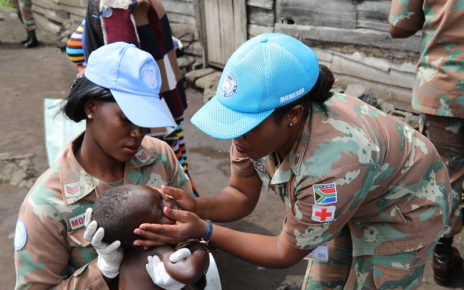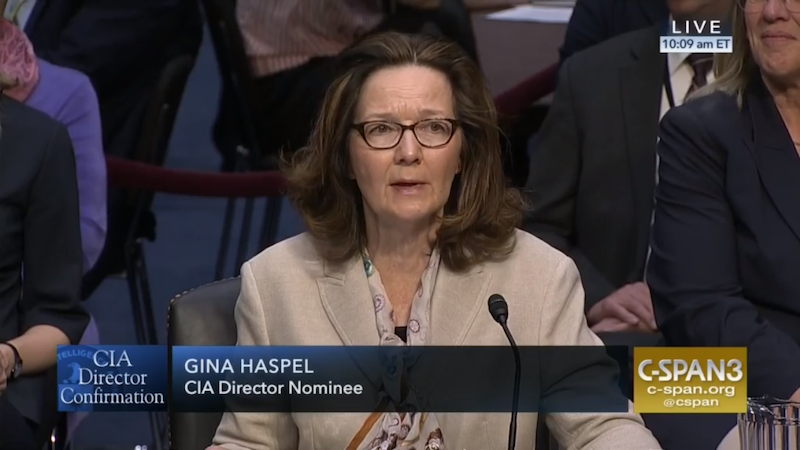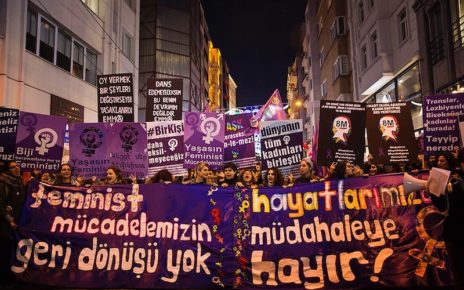On October 4, 2016, commemorative quiet demonstrations organized by the Native Women’s Association of Canada (NWAC) were held across the country. The Sisters in Spirit vigils commemorated the spirit and dignity of missing and murdered indigenous women and girls and continued support of families and relatives. Every year, a growing number of indigenous women are murdered or reported missing. As of 2014, 1073 aboriginal women were reported missing/murdered, according to Statistics Canada, amounting to more than 1200 in 2015. On December 6, 2015, the federal government decided to launch a commission of inquiry into the case of missing and murdered women, to examine the systemic causes of gendered and ethnic-based violence against indigenous women in Canada. Its mandate includes the examination and report on the impacts of governmental policies and institutional practices.
This commission is the fruit of long-lasting efforts of grassroots organisations, civil society advocates, provincial and institutional reports, previously highlighted by the 2014 documentary Highway of Tears.
From local community support to cross-Canada awareness and involvement, the many subjects highlighted by the Highway of Tears are worth looking at again. So let’s look back at this documentary in light of the federal commission of inquiry.
What is the Highway of tears?
Directed by Matt Smiley, Highway of tears follows the families, community members and figures of authority of the victims of murder along the Yellowhead Highway 16, commonly named the Highway of Tears. Stretching from Prince Rupert to Prince George, the region is defined by high rates of poverty and failed transportation services, resulting in unsafe hitch-hiking.
The documentary focuses on the socio-cultural and socio-economic constraints impeding women’s security in British Columbia, to answer the first question: why do women hitchhike in the region, when it’s been proven to be dangerous and unsafe?
Through various interviews with indigenous community representatives, families of victims, RCMP representatives, and civil society members, the audience is drawn into the workings and legacy of the E-Pana project launched in 2005, and the repercussions on indigenous community and external relations. Project E-Pana was started by BC’s Unsolved Homicide Unit, to investigate the murder of 18 victims along Highway 16, after commonalities between three previous cases were found. The documentary thus focuses on 18 victims and their investigation, and presents a clear emphasis on the biased reporting of specific cases such as that of Nicole Hoar, a non-indigenous young woman, whose case pushed Smiley to investigate the issue in the first place.
The root causes of violence are multiple. While impunity and lack of law enforcement create systemic obstacles to indigenous empowerment, the lack of services and the socio-political neglect of the indigenous region contribute to regional economic shortages which create an unsafe environment for women and girls. The addition of those variables results in harmful and traumatic situations which could be prevented.
Giving more depth of analysis, Smiley’s opening about the historical legacy of integrationist education, and colonialism, highlights the many intricacies and tensions existing between indigenous and non-indigenous communities and Canadian figures of authority, including the RCMP. Long lasting haunting memories of abduction and violence engendered profound change in indigenous family structure, patterns of care, education, and policing.
As part of the documentary’s interviewees, Human Rights Watch (HRW) gives a clear sense of the inequalities and societal shortages happening in the region and the problematic RCMP relationship with indigenous communities, key elements of their 2013 report Those who take us away.
The documentary concludes with the portrayal of the Highway of Tears Symposium 2006 report, for which the families of victims and 500 delegates from different sectors of society gathered to offer recommendations. In fact, since the 2006 Symposium, several significant reports from civil society (such as HRW) and national agencies have been released.
Other reports
In 2010, British Columbia commissioned a public inquiry to look into the case of Missing Women’s 1993-2002 investigations in Downtown Eastside Vancouver. The commission issued a 2014 report, with several recommendations for better preventive strategies against targeted violence. The report pushed for the enhancement of practical measures for equal protection of indigenous women and police accountability. In the same year, RCMP released its own report and updated it in 2015 about a national operational approach to the case of murdered and missing indigenous women. The report put emphasis on domestic violence in RCMP jurisdictions. Amnesty International, which released a critical analysis of the report and update, however states that the report missed many opportunities to include interprovinciality (missing Quebec and Ontario cases), non-domestic violence, and consistent indigenous identification of the victims. Amnesty also claimed the report didn’t engage with the implementation of comprehensive strategies to tackle ethnic-based violence in and out of the policing system. While national reports have flourished, the crisis has recently been taken to the international level, as the 2015 UN Committee on the Elimination of Discrimination against Women (CEDAW) report condemned Canada for its inaction.
It’s 2016
It has been more than a month since the official launch of the Commission on August 3, 2016, and grassroots organizations such as NWAC have, since then, voiced concerns about the accessibility and transparency of the Commission. As stated by NWAC President, Francyne Joe, in a recent press-release:
“A transparent National Inquiry includes easily accessible information regarding office locations across Canada, readily available contact information to the Commissioners and their staff, a step-by-step guide on how to get involved with the Inquiry, a straightforward and coherent website, and other necessary infrastructure that will ensure the success of this Inquiry.”
Highway of Tears aims to go beyond numbers and stereotypes, to put humanity back at its place, with human beings whose brutal death and disappearance have affected their families and friends, transcending community boundaries. Starting from a narrative about the stereotypical coverage of murdered indigenous and white sex workers (E-Pana), Smiley steps away from morality and turns towards a narrative of humanness and worthiness of each victim. And this is what we should uphold as primary concern in the context of a slowly-launched Commission of Inquiry.
Photo: Lonely walker (2016), by Anonymous via Pixabay. Licensed under CC0.
Disclaimer: Any views or opinions expressed in articles are solely those of the authors and do not necessarily represent the views of the NATO Association of Canada.




